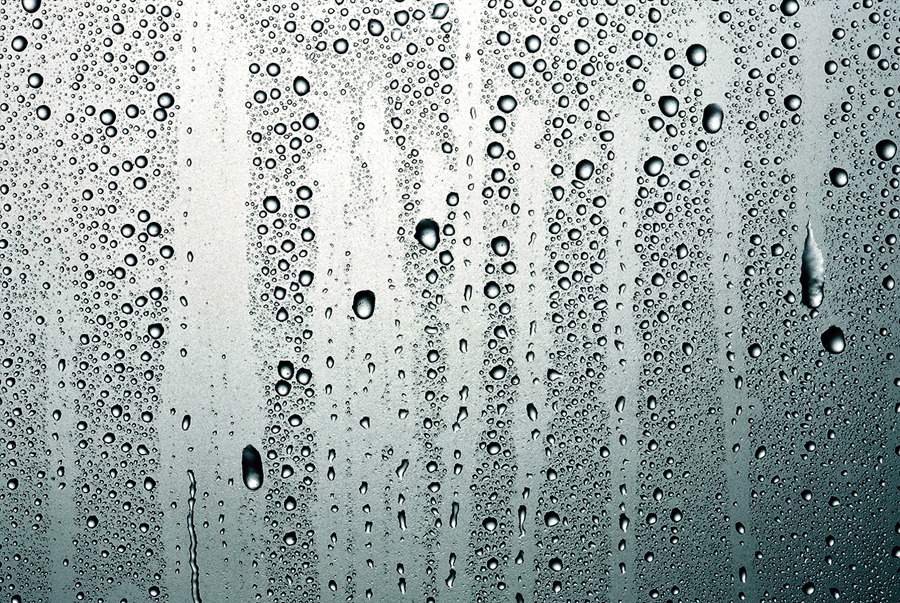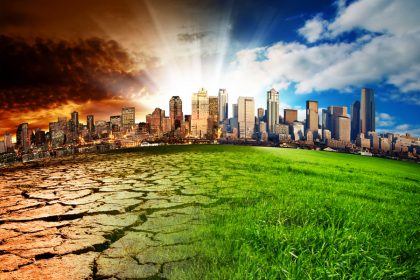Hi readers! Hope you are doing well.
I was thinking of starting a new series but, since I promised to talk on Water Vapors (WV) therefore, I am keeping that.
The reason of selecting this topic was two statements appeared in an introductory chapter of Fourth Assessment Report of International Governmental Panel on Climate Change (IPCC), 2007.
- “A restricted set of topics are chosen for IPCC, based on their significance to the tasks of assessing information relevant for understanding the risks of human-induced climate change,
Then how can WV be considered a Greenhouse Gas (GHS)? It’s a natural and not human induced component which even the UN cannot forcefully remove. Understand?
- “Intellectual honesty and professional ethics call for scientists to acknowledge the work of predecessors and colleagues because the attributes of science described in the predecessor’s work can be used in assessing competing assertions about climate change” WOW
This reminds me of a review published in 2005 by Azam F and Farooq S titled:
“Agriculture and global warming: Evapo-transpiration as an important factor compared to CO2”. Pak J. Biol Sci. 8: (11), 1630-1638”
The review was based on a new concept not reported before by anybody, anywhere. It says,
“Over the past few decades, global warming vis-à-vis elevated CO2 and other GHGs has remained an issue of concern for researchers, environmentalists, and policy makers. Fossil fuels have been blamed for most of the rise in atmospheric CO2, despite the fact that WV are the pre-dominant GHG with atmospheric concentration of 1-2% (27-54 times of CO2 and >95% contribution to greenhouse effect). Incidentally, most of the statistics on GHGs overlooks WV creating the impression of human intervention (anthropogenic) as the dominant contribution to global warming. Similarly, role of evapotranspiration (ET) from the vegetated land in elevating the atmospheric concentration of WV is almost completely overlooked. According to highly conservative estimates, ET from agricultural land is responsible for adding >22×1012 tons year-1 to the total atmospheric water of 30-60×1012 tons. These are astonishingly high contributions to atmospheric WV that need to be considered when assessing anthropogenic aspects of global warming. This review takes an account of these factors ultimately suggesting that i) ET is capable or raising the atmospheric WV concentration significantly and ii) evolution and introduction of crop types more efficient in water use may help resolve the problem.
Now, according to first statement, the topic of this review cannot be included in the IPCC 4th, assessment report of 2007 because WP is a human induced climate change factors, but according to 2nd statement
(If taken seriously), the review was expected to be acknowledged which seemingly, is not the case if the following read carefully.
On November 17th, 2008, NASA (Pl visit website) produced a video taken in 2005, indicating that distribution of atmospheric WV varies across the globe. During summer and fall of 2005, the visualization shows that most vapor collects at tropical latitudes, particularly over South Asia, where monsoon thunderstorms swept the gas some two miles above the land.
They further added that WV is known to the Earth’s most abundant GHG but the extent of its contribution to global warming has been debated.
Using recent NASA satellite data, researchers have estimated more precisely that the heat-trapping effect of WV in the air validated the role of this gas as a critical component of climate change.
Andrew Dessler and colleagues from Texas A&M University in College Station confirmed that the heat-amplifying effect of WP is potent enough to double the climate warming caused by increased levels of CO2 in the atmosphere.
On January 28th, 2010, Solomon et al., published a paper in Science, (Vol 327, Issue 5970) titled:
“Contributions of Stratospheric Water Vapor to Decadal Changes in the Rate of Global Warming”
The paper says that,
“Between 2000 and 2001, the concentration of WV in stratosphere dropped by about 10%. Does this mean that the effect on climate will decrease, and global warming will slow down? The authors used combination of data and models to show that lower stratospheric WV probably has contributed to the flattening of global average temperatures since 2000, through slowing the rate of warming by about 25%. However, the amount of WV in stratosphere probably increased between 1980 and 2000, a period of more rapid warming, suggesting how important the concentration of stratospheric water vapor might be to the climate?”
“Contributions of Stratospheric Water Vapor to Decadal Changes in the Rate of Global Warming”
On January 29th, 2010, Doug L. Hoffman blogged under the title “It’s The Water Vapor, Stupid”!
The blog says that,
“Report in Science underscores what many scientists have been saying for years, it’s WV not CO2, that has been driving global temperature changes in recent decades. Stratospheric WV concentrations decreased by about 10% after the year 2000, slowing the rate of global surface temperature increase over the past 10 years. It also seems likely that WV in the stratosphere increased between 1980 and 2000, causing surface temperatures to warm by an extra 30% during the 1990s. These findings show that stratospheric WV represents an important driver of decadal global surface climate change, yet the IPCC crowd continues to focus on CO2” (Guess Why)?
On July 2nd, 2010, Schneider et al., published a paper in Reviews of Geophysics, 48, 2010 titled: “Water vapors and the dynamics of climate change”
(This paper was actually of 2009 because it was received by the Journal in June 2009 and accepted for publication on December 3rd, 2009, just before the publication of paper in Science in January 2010). The paper says,
“Water vapors are not only the Earth’s dominant GHG but, through releasing latent heat upon condensation, it also plays an active role in dynamic processes that shape the global circulation of atmosphere and discussed how latent heat release is implicated in such circulation changes, particularly through its effect on the atmospheric static stability.
And here comes “Water Vapor and Climate Change”: ACS Climate Science Toolkit Narratives.
Since, American Chemical Society (ACS) developed Climate Science Toolkit in 2011, hence this publication appeared after that.
The blog says that,
“Although WV accounts for about 60% of the Earth’s GH warming effect, it does not control the Earth’s temperature. Instead, the amount of WV is controlled by the temperature because it limits the maximum amount of WV an atmosphere can contain. If air contains maximum amount of WV and the temperature decreased, some of the WV will condense to form liquid water. This is why clouds forms when warm air containing WV rises and cools at higher altitudes.
The GH effect is controlled by non-condensable gases, mainly CO2, with smaller contributions from methane, nitrous oxide, and ozone. Because these gases are not condensable at atmospheric temperatures and pressures hence, the atmosphere can pack by these gases in. Thus, CO2 (and CH4, N2O, and O3) has been building up in the atmosphere since the beginning of fossil fuel burning. If non-condensable GHG are not increasing, the amount of WV in the atmosphere would not have changed. The addition of the non-condensable gases causes the temperature to increase, which leads to an increase in WV that further increases the temperature: a positive feedback effect.
And finally, on February 8th, 2022, NASA uploaded a report titled, “Steamy relationships: How atmospheric WV supercharges Earth’s GH Effect?”
Alan Buis: the author of the report says,
“Water vapor is Earth’s most abundant GHG and a key part of Earth’s water cycle: the path that all water follows as it moves around Earth’s atmosphere, land, and ocean as liquid water, solid ice, and gaseous WV.
NASA terms WV “A different breed of GHG” because carbon dioxide, methane, nitrous oxide, ozone, and chlorofluorocarbons (0.05% of earth’s total atmosphere) are heat trapping non-condensable gases that can’t be changed into liquid at very cold temperatures. But WV is a different animal. It is condensable and can change from gas into liquid. Its concentration depends on the temperature of the atmosphere which makes WV the only GHG whose concentration increased because the atmosphere is warming and causes it to warm even more. If non-condensable gases weren’t increasing, the amount of atmospheric WV would have remained unchanged from its pre-industrial revolution levels. Hence, they still think that CO2 is the king of the global warming.
Now back again to the second statement:
None of these publications acknowledge the work reported in the review published by Azam & Farooq in 2005. One possible reason could be that it was in Pakistan Journal of Biological Sciences (PJBS). As the name indicates, the Journal is from Pakistan. This very name has probably given the impression to those who matter that papers published in this Journal perhaps would largely be of local relevance and hence are not worth reading.
So, when the paper is not considered, there is no question of accepting and/or rejecting the concept mentioned therein.
Please be informed that PJBS is a credible Journal as it is a peer reviewed Journal being indexed in AGRIS, ASCI database, Asian Digital Library, Cambridge Scientific Abstract, Chemical abstract services, Google scholar, ISI web of knowledge, PubMed, SCIMAGE and Thomson ISI (https://scialert.net/archivedetails.php?issn=1028-8880&issueno=112). Had it been considered in 2005, the concept would have been much advanced than it is now but who knows, it might have already been which we don’t know.
Lets’ hope dear readers that one of these days our Journals would also be considered worth reading but, and there is a big BUT before that we must establish our own credibility which has been ruined completely both as a scientist and as a nation.
Think about this and I will see you next week with
“Strategies for reducing methane in the paddy fields”
Take care
Bye.





